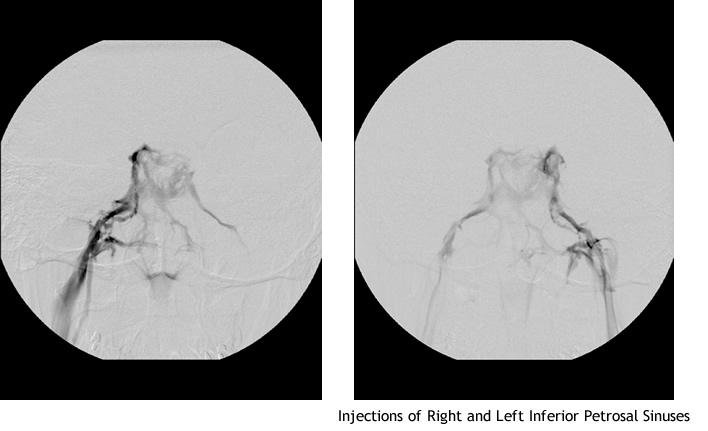Inferior petrosal sinus sampling (IPSS) is used to aid in the diagnosis of Cushing’s disease. IPSS tests to see the source of the raised ACTH levels in a patient with Cushingoid features. Typically, a catheter is placed into each common femoral vein. Then, using fluoroscopic guidance, one catheter is navigated into the right inferior petrosal sinus, and the other into the left inferior petrosal sinus. The inferior petrosal sinuses drain the pituitary gland. Once the catheters are in the inferior petrosal sinuses, multiple blood samples are taken.
Hormones (ie. Corticotropin or Vasopressin analogues) are injected, and samples are taken to measure the pituitary’s response to the injected hormones. This tests the pituitary function, and can determine if the cause of Cushing’s disease is the pituitary gland. It can also identify the side of the pituitary gland that is most likely to be causing the Cushing’s disease.








